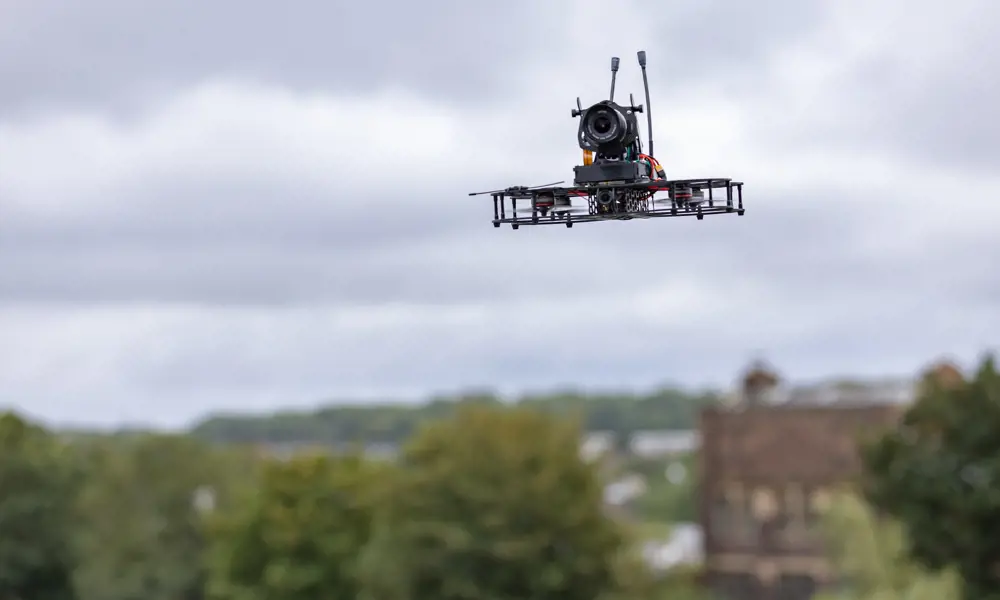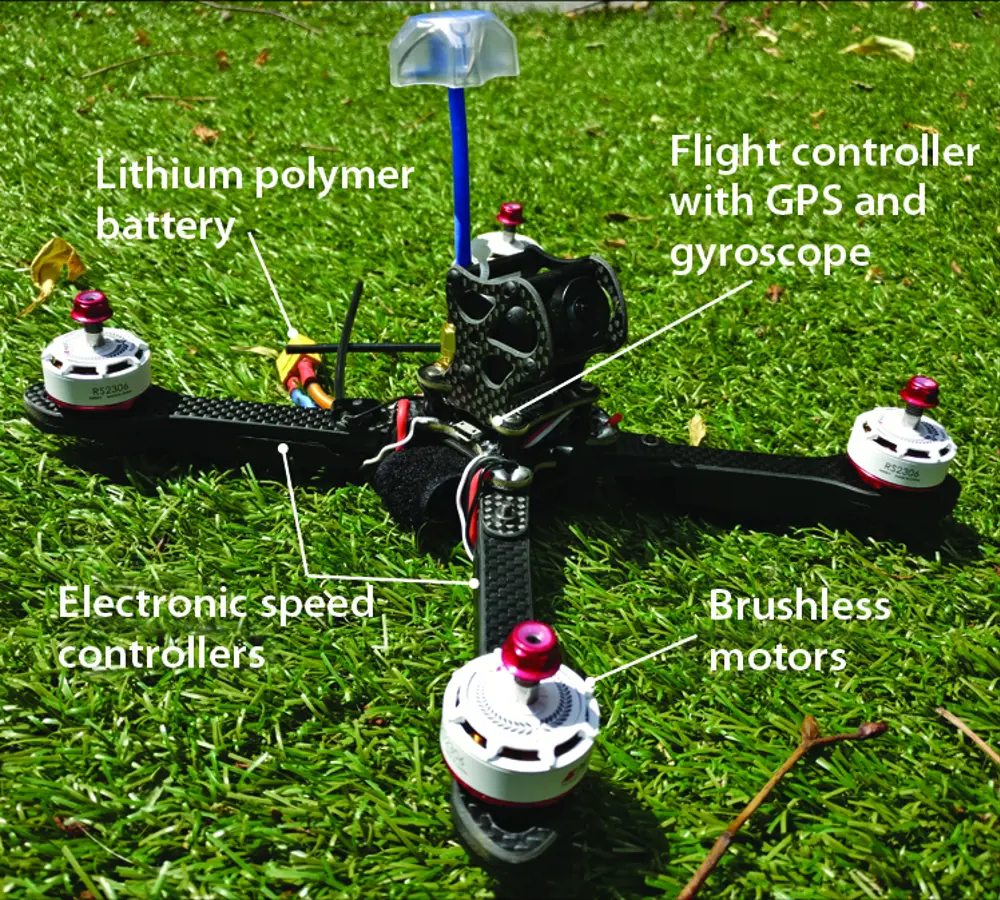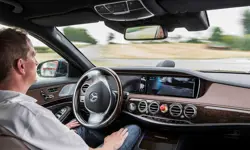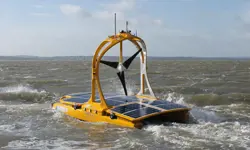
Drones
Improvements in battery life, motor power and gyroscopes mean that users have more control over drones than ever before, while improvements in manufacturing mean that the component parts are more affordable.
Previously, radio-controlled vehicles relied on nickel-based batteries – either nickel-metal hydride or nickel-cadmium batteries – which have significantly smaller capacity per kilogram of battery than the newer lithium polymer batteries. These nickel batteries were not powerful enough to be used in drones, as in drones the thrust from the motors alone provides lift.
Most drones currently use lithium-polymer batteries, but there has been little improvement in their performance, and they are the most limiting factor for drones today. For professional drone racing, users require batteries with internal resistance values less than one milli-ohm per cell. New lithium-sulphur batteries have two to three times the capacity of the previously used nickel-based batteries, and may be the answer to the limitations of the lithium-polymer batteries. The batteries still need further work to stabilise the electrodes to prevent them from breaking down after charging-discharging cycles.
The motor technology that powers drones has also seen huge technological advances. The model aircraft of the early 2000s relied on brushed motors, a type of motor that uses brushes running inside the motor to commutate the current passing through the coils. It is mechanically complicated, but electrically simple as applying voltage across the motor makes it spin. A few years later, model aircraft enthusiasts experimented with brushless motors from CD drives. In a brushless motor, the commutation is performed electronically, using transistors to energise coils in the motor, which is more efficient than a brushed motor, and has a higher power to weight ratio. These powerful motors have more torque, or rotational force, than a brushed motor, so can produce the thrust necessary to allow drones to take flight.
As drones are inherently unstable, the flight controller needs to adjust the speed of the motors up to 8,000 times per second

The component parts of a drone
As drones are inherently unstable, the flight controller needs to adjust the speed of the motors up to 8,000 times per second. This increased torque means that the motor can adjust its speed faster than a brushed motor can, ensuring that the drone is stable. Brushless motors require an electronic speed controller to adjust the speed of the motors, which adds additional cost. However, in recent years, the price of field effect transistors, the key component of the electronic speed controller, have dropped.
Drones need constant correction to stay level. A racing drone may only require a gyroscope to stay level, but drones that are used in aerial photography require a vast array of sensors. These often include a gyroscope, accelerometer, barometer, magnetometer and a GPS receiver. The cost and size of these chips has significantly decreased over the last 10 years. For example, a suitable chip containing a three-axis gyroscope and accelerometer costs less than £2.50 today, and is smaller than three millimetres squared, 10 times smaller than a similar chip would have been 10 years ago.
Advances in GPS technology have made hobby drones successful. Civilian GPS devices included a feature known as Selective Availability, which was an intentional reduction of public GPS signals for security reasons that caused an error in the reported position of the GPS device of around 100 metres, far too much for any drone to be able to remain steady. In the late 2000s, newer modules were released that update five times a second, providing the necessary precision for drones to remain stationary to within half a metre. More recently, global positioning units have been released that can receive GPS – GLONASS (the Russian equivalent), Galileo (European) and BeiDou (Chinese) – which can relay their position up to 10 times per second with even greater precision.
***
This article has been adapted from "How does that work? Drones", which originally appeared in the print edition of Ingenia 73 (December 2017)
Keep up-to-date with Ingenia for free
SubscribeRelated content
Technology & robotics

When will cars drive themselves?
There are many claims made about the progress of autonomous vehicles and their imminent arrival on UK roads. What progress has been made and how have measures that have already been implemented increased automation?

Autonomous systems
The Royal Academy of Engineering hosted an event on Innovation in Autonomous Systems, focusing on the potential of autonomous systems to transform industry and business and the evolving relationship between people and technology.

Hydroacoustics
Useful for scientists, search and rescue operations and military forces, the size, range and orientation of an object underneath the surface of the sea can be determined by active and passive sonar devices. Find out how they are used to generate information about underwater objects.

Instilling robots with lifelong learning
In the basement of an ageing red-brick Oxford college, a team of engineers is changing the shape of robot autonomy. Professor Paul Newman FREng explained to Michael Kenward how he came to lead the Oxford Mobile Robotics Group and why the time is right for a revolution in autonomous technologies.
Other content from Ingenia
Quick read

- Environment & sustainability
- Opinion
A young engineer’s perspective on the good, the bad and the ugly of COP27

- Environment & sustainability
- Issue 95
How do we pay for net zero technologies?
Quick read

- Transport
- Mechanical
- How I got here
Electrifying trains and STEMAZING outreach

- Civil & structural
- Environment & sustainability
- Issue 95